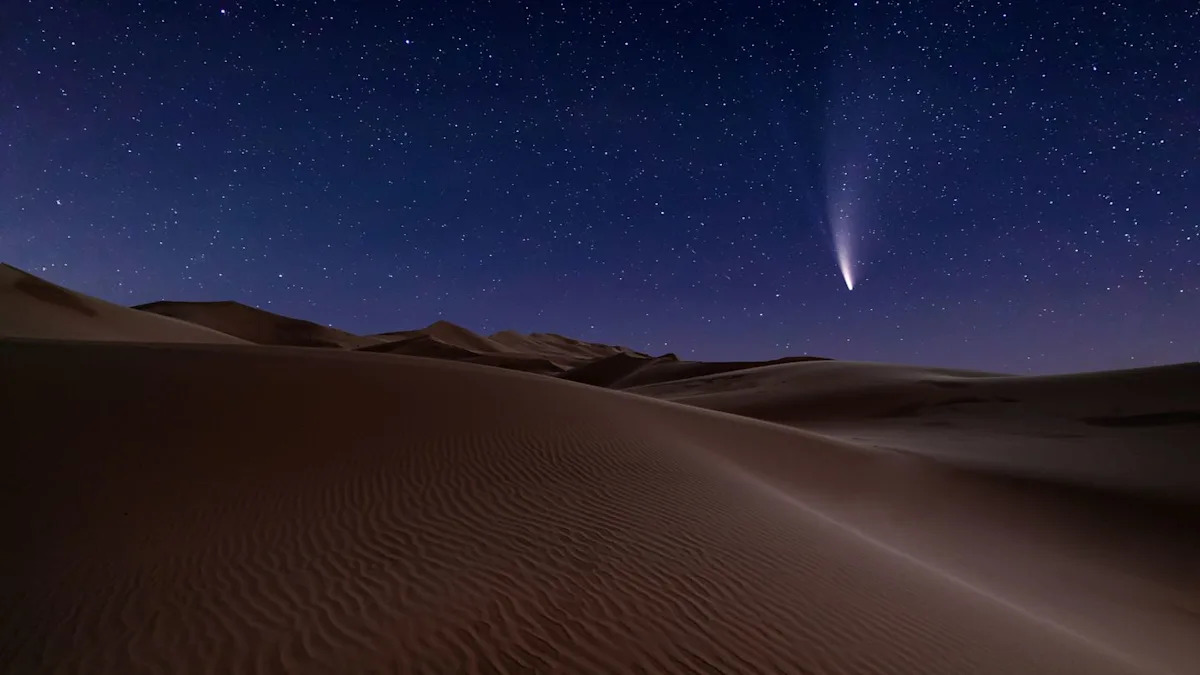Here’s what you’ll learn when you read this story:
-
Meteorites found in the Sahara Desert might be pieces of Mercury that broke off as the result of a collision when the Solar System was still forming.
-
The meteorites had many parallels to the surface of Mercury, but also some noticeable differences, including a mineral not previously detected on Mercury’s surface.
-
Whether or not these rocks are from Mercury remains a mystery, but if not, they could still be useful analogs for understanding more about the innermost planet.
Though human boots have never set foot on another planet, pieces of Mars have fallen to Earth as meteorites, giving us our only chance to study them up close until NASA’s Mars Sample Return Mission drops off the rock cores collected by Perseverance. Meteorites that emerged from the Sahara desert might be from another resident of our solar system, Mercury.
To say Mercury is extreme is an understatement— it’s hot enough to melt lead, after all. The innermost planet of the solar system is only about 58 million km. (36 million miles) from the Sun, with an average temperature of 167°C (333°F). Few spacecraft have been able to venture anywhere near this scorching clump of iron and silicates without overheating and breaking down. Mariner10 performed the first flyby of Mercury, MESSENGER orbited, and BepiColombo is on its way, but nothing has ever been able to crawl on its surface.
If fragments of Mars could have hurtled to Earth after some ancient collision, then why are there none from Mercury? This is the question planetary scientist Ben Rider-Stokes of The Open University in the UK wanted to answer. MESSENGER has been able to collect data about the surface composition of Mercury, but we have yet to figure out how to send something to pick up samples without being blasted by solar radiation. Stokes examined meteorites that had previously been suspected to have come from Mercury and found possible matches.
“The rise in the number of meteorites collected from hot and cold deserts has greatly expanded the range of meteorite compositions and potential parent objects,” Stokes said in a study recently published in Icarus.
Meteorites Ksar Ghilane 022, which landed in Tunisia, and Northwest Africa 15915, discovered in Morocco, show a surface composition and mineralogy similar to the Mercurian crust. Whether they are actually from Mercury remains unknown. However, both are achondrites, previously melted meteorites characterized by an absence of chondrules (mineral spheres embedded in the rock) and made mostly of silicates such as olivine and pyroxene, often found in igneous and metamorphic rocks. Plagioclase and oldhamite are also present. They also do not fit in with any other known achondrites. There’s just one issue.
What is problematic about both specimens is that the iron-free silicates and oxygen isotopes they contain mirror aubrites, made largely of the translucent silicate mineral enstatite (MgSiO3). Aubrites have not been detected on the surface of Mercury.
“It is not believed that the aubrites originated from Mercury, as the planet has an extremely red spectrum which differs from aubrite spectra, but it has been suggested that aubrites represent a proto-Mercury,” said Stokes.
Billions of years ago, Mercury might have had a different surface composition before it was pummeled by asteroids, which pockmarked it with craters. Both meteorites are about 4.5 billion years old. This makes them younger than most primitive materials that were swirling around in the solar system, but older than the smooth plains of Mercury, which cover a third of its surface and are around 3.6 billion years old. Even 4-billion-year-old regions of the plains are still no match for the age of the meteorites.
It is possible that the meteorites are actually remnants of Mercury’s crust before there were enough collisions to obliterate that rock and expose the material beneath it. Remnants of this crust on Mercury might have gone undetected, but that knowledge eludes us. BepiColombo is expected to reach Mercury by the beginning of 2026. The spacecraft may be able to find a source of material that is a match for these mysterious rocks.
Even if they aren’t from Mercury, Ksar Ghilane 022 and Northwest Africa 15915 could be analogs for the surface of a planet on which we would’t be able to take the heat.
You Might Also Like
